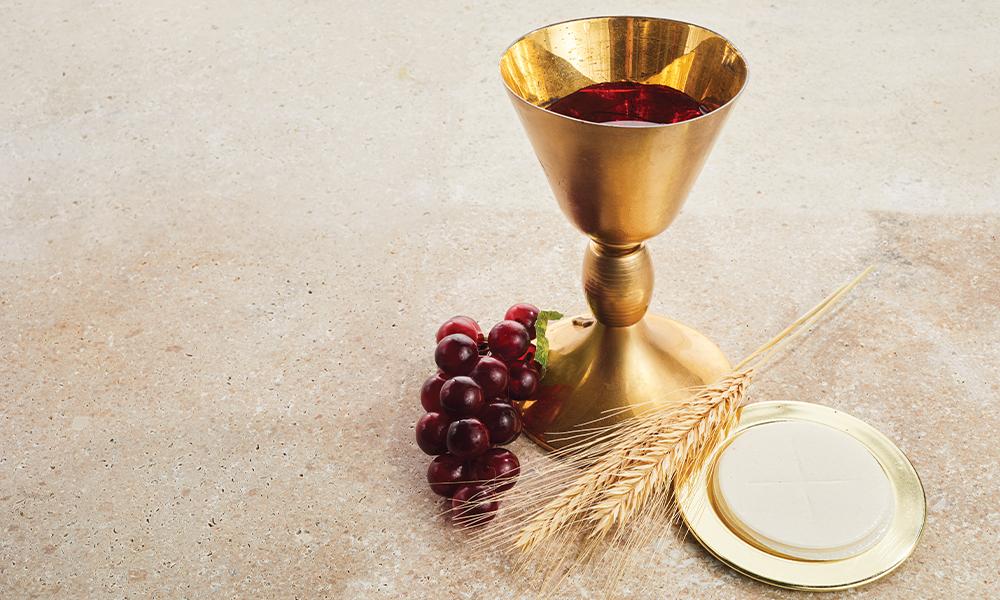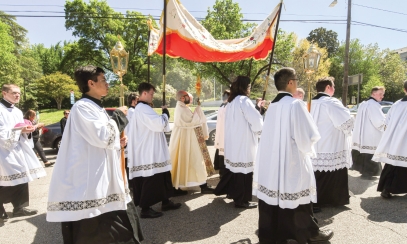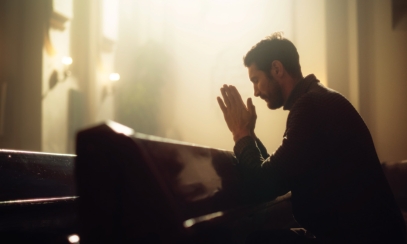
Part II: Christ’s Self-Gift and the Sacrificial Meal
‘This is My Body, Given for You’
‘This is My Body, Given for You’
In our previous issue, we discussed the Eucharist as a sacrifice that makes the Paschal Mystery — the passion, death, resurrection and ascension of Christ — present to us. We pick up this thought as we reflect on how this sacrifice is presented to us — as a meal.
In our previous issue, we discussed the Eucharist as a sacrifice that makes the Paschal Mystery — the passion, death, resurrection and ascension of Christ — present to us. We pick up this thought as we reflect on how this sacrifice is presented to us — as a meal.
The traditional Passover celebration, as it was celebrated in Jesus’ time, involved two parts: the sacrifice of the lamb in the Temple on the Day of Preparation, and the meal during which the lamb was consumed in the home. At the Last Supper, Christ combines these two moments.
By making his self-offering in the context of a meal, Jesus brings his sacrifice home to us.
Because of this, his sacrifice is also experienced as an invitation to join him at the table. After all, the point of the Eucharist is generous access to Christ, who comes to us in the form of bread and wine, food and drink, something easy and natural for us to receive.
The logic underlying the sacraments is the same logic that underlies the Incarnation: God’s love is so great and so generous that he makes himself present and readily available to us so that we, in turn, can be drawn deeper into the Paschal Mystery, to which we have already been united in baptism. It is the core message of the Gospel: God loves us and wants an intimate relationship with us — so he makes himself excessively, even scandalously, accessible to us.
We reflected previously on Christ as the perfect sacrifice, the absolute best of what we have to offer from God and given back to God. It is fitting that this sacrifice is presented to us as a meal since we are invited to have a share in this saving action.
We do so most importantly as recipients of his gift of self, the gift of presence. Just as in the Passover celebration in Judaism, even today those celebrating the traditional meal identify themselves with their ancestors who were freed from slavery in Egypt. And, in the Eucharist, we too identify ourselves with the Church of all times and places. Christ’s saving action delivers us — in the present tense. When we talk about Real Presence, we are talking about the physicality of the sacrament, but also, we are talking about temporality: Christ’s saving action in the Paschal Mystery is made present to us here and now. Salvation is not something that only happened in the past, though the saving events of the past are important. Salvation also is not something that will simply be worked out in the future, though the completion of salvation history is yet to come. Salvation is happening now. The Eucharist reminds us of this and also places us in the midst of Christ’s perfect saving act.
In addition, the invitation to the table of the Lord compels us to make a response to Christ’s self-gift. The point of sacrifice is not the bloodshed, but the depth of the gift. Being a Eucharistic people means gratefully receiving his gift, and being transformed by and imitating the gift. Christ’s complete gift of self is the model of true humanity. The Eucharist, then, is both our nourishment and the example we are called to imitate.
As Christ gave himself up completely for us in the incarnation and the Paschal Mystery, and made present to us in the Eucharist, we only find our fulfillment as human beings if we in turn become gifts.
In the Eucharist, we are invited to an intimate encounter with Christ, which helps us to understand and live out who we truly are. The invitation to the table is also the calling to go forth and become gifts to our Lord and to the world, and in the process, to invite others to the table.
Michael Martocchio, Ph.D., is the secretary of evangelization and the director of the Office of Catechesis and Christian Initiation. Email him at mmartocchio@charlestondiocese.org.
This is Part 2 of his series on the Real Presence. Visit charlestondiocese.org/eucharistic-revival.



